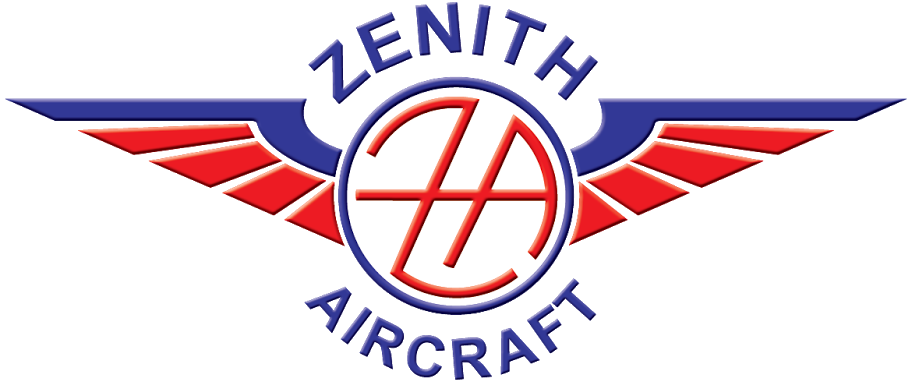The CH 750 Cruzer Design
The CH 750 series of designs are based on vast design experience gained by aeronautical engineer Chris Heintz to provide the best in performance, cost, reliability and ease of construction.
With form following function, the Cruzer looks like the CH 750 STOL (short take-off and landing) off-airport plane.
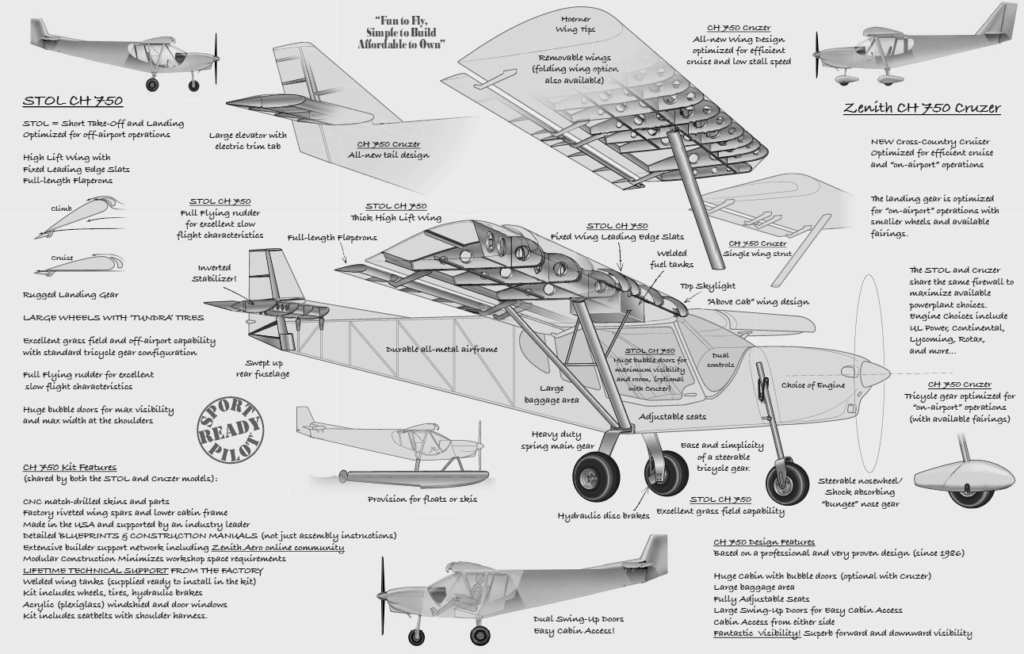

The modern CH 750 design makes use of advanced technologies, while using proven design concepts and simple systems for easy assembly and maintenance. A professional design, the STOL CH 750’s structure has undergone a complete and rigorous flight test and design stress analysis. Developed for the inexperienced first-time builder and demanding recreational pilot, the Cruzer is designed to be easy to build and to maximize flight performance and efficiency.
DESIGN
The Zenith CH 750 Cruzer has the same roomy cabin, wrap-around visibility, and easy in-and-out access of the STOL CH 750, but is optimized for on-airport operations. The absence of the leading edge slats, combined with a redesigned wing, more conventional tail design, and small wheels with fairings make it about 20 mph faster than the STOL CH 750.
The CH 750 Cruzer does not sacrifice docile handling for speed, however. It retains a slow landing speed and easy flying characteristics. If anything its more sleek aspect handles a little more similarly to the trainers most pilots are used to than do the Zenith STOL designs, the relatively high-drag features of which sometimes take a little “getting use to” for pilots who have never flown such aircraft before.

The large effective control surfaces provide excellent controllability at very low flying speeds – a necessity for effective short take-off and landing performance – while being very light and balanced.
“The controls are a true delight. I had expected some slow, maybe sloppy results, but the balance is exquisite and the movement smooth and silky. I actually have to compare it somewhat to the feel of the stick in a LoPresti SwiftFury – and that’s no joke. The airplane will turn on a dime. Throttle input is instantaneous.” – General Aviation News & Flyer magazine
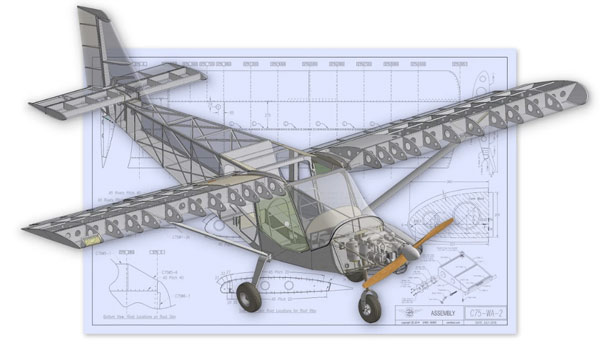
Control System
The control system is developed for ease of operation and simplicity, as well as low maintenance: There are no moving parts inside the wings, and controls systems are easily accessed through a large service door on the bottom of the fuselage.
Aileron: Flaperon system; push-pull rods from flaperon mixer assembly, easy disconnect for wing removal.
Flaps: Flaperon system (control mixer); push-pull rods, easy disconnect for wing removal. Mechanical lever located on floor, pilot’s side.
Elevator: Control cables to elevator control horns.
Rudder: Control cables from rudder pedals to rudder control horn.
Steering: Direct linkage from dual rudder pedals to nosegear strut (hydraulic disk brakes on main gear wheels with individual toe-brake pedals on pilot’s side).
The standard fuel system is made up of dual wing tanks located inside the wings behind the wing spars. Each welded aluminum fuel tank has a capacity of 10 US gallons, for a total capacity of 20 gallons.

VISIBILITY
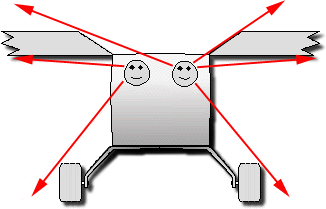
Unlike other high-wing designs, the Cruzer CH 750’s wings are positioned above the cabin and fuselage to provide the pilot and passenger with superior visibility. The ‘above cab’ wings taper at the wing root to maximize upward visibility, as shown on diagram.
LANDING GEAR
The stock tricycle gear system used on the Cruzer CH 750 has outstanding shock absorbing capability for rough field operation. The CH 750’s tricycle gear offers rough field capability while providing all the advantages of a tricycle-gear aircraft, such as easy ground handling, superior visibility, and lower insurance rates.

Float operation FLOATS: Zenair Ltd all-metal floats are ideal for use on the CH 750, and may easily be rigged to the aircraft. The floats are mounted on a monoleaf main spring for retained shock absorption on water. New amphibious floats offer capability to operate from both land and water: The amphibious floats feature retractable main wheels (pneumatically activated), and a unique retractable single steerable nose wheel.
The airframe itself is designed to allow maximum customization by the actual builder. The CH 750 is not designed ‘around’ a specific engine, allowing for custom powerplant installations by builders. However, the proven Rotax 912 engine is highly recommended, and is available as a firewall-forward kit.
See the Floats page for details, and see the photo gallery for more float pictures.
Throughout, the CH 750 aircraft is designed to optimize performance and to provide excellent flight characteristics. However, the aircraft is also designed to be easy and quick to build, and to provide a durable airframe that is well-suited for its utility role. Finally, the Cruzer is also designed to be low-cost to build, to own and to operate.
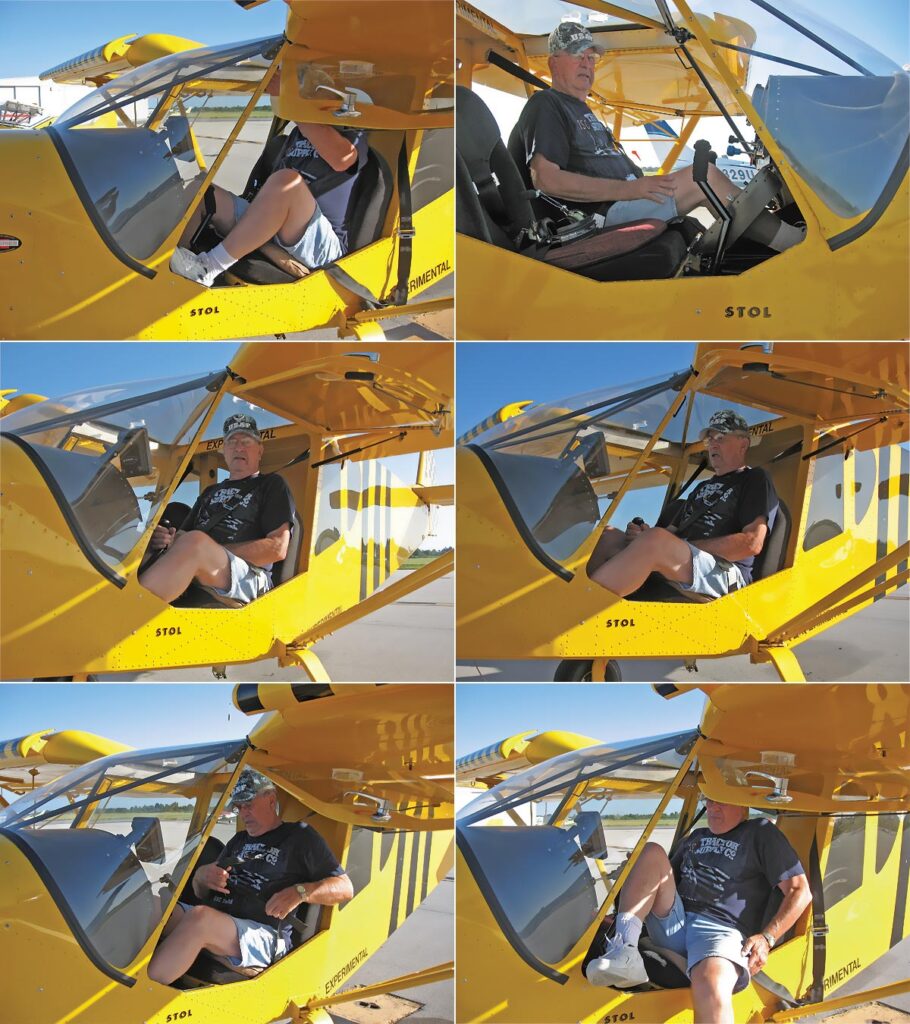
The large doors and tricycle gear makes it easy to enter and leave the aircraft. Extremely important for older pilots.
